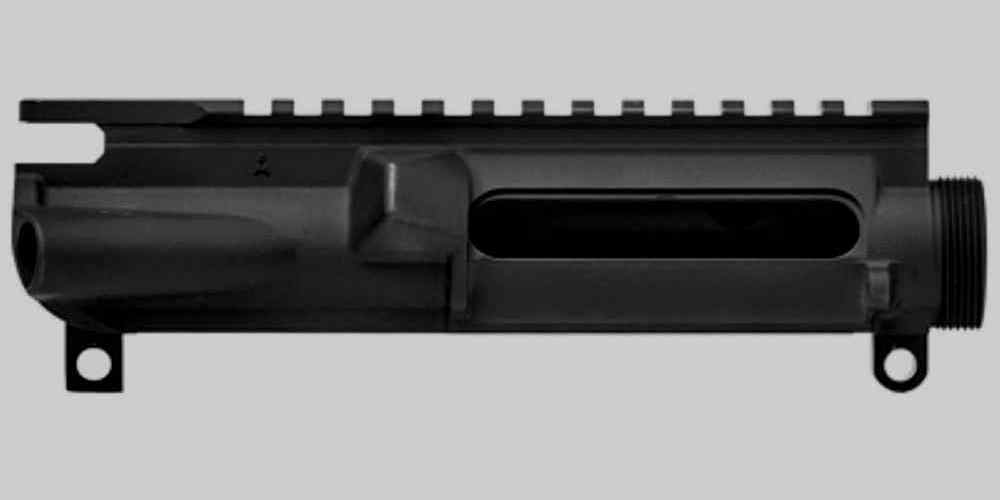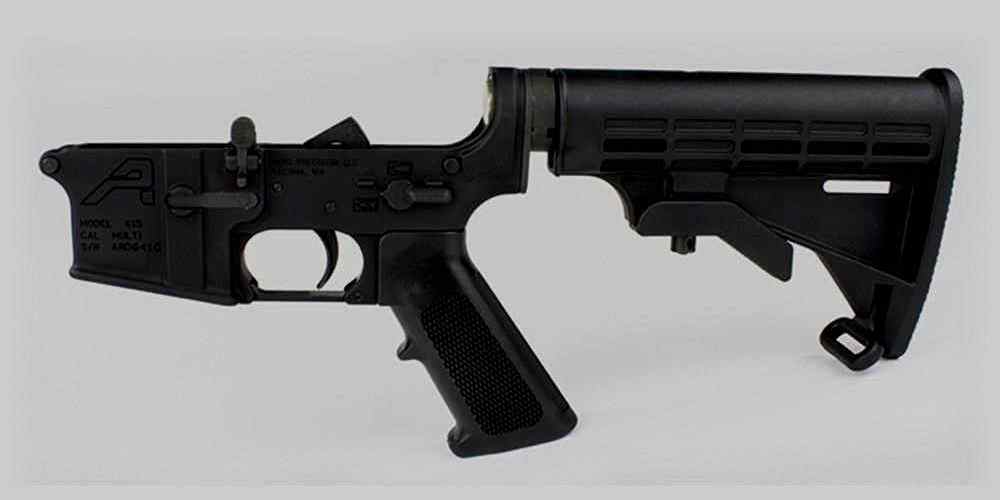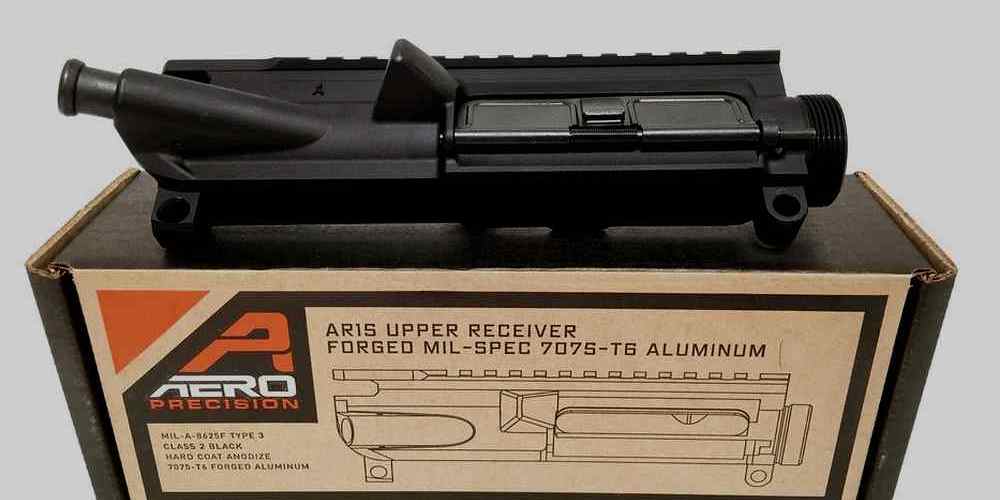“Monolithic Uppers: Revolutionizing AR15 Customization”
Pros and Cons of Monolithic Uppers for AR15 Custom Builds
When it comes to customizing your AR15 rifle, one of the key decisions you’ll need to make is whether to go with a traditional upper receiver or a monolithic upper. Monolithic uppers have been gaining popularity in recent years, thanks to their sleek design and potential performance benefits. In this article, we’ll explore the pros and cons of monolithic uppers for AR15 custom builds to help you decide if they’re the right choice for your next project.
Let’s start with the pros. One of the biggest advantages of monolithic uppers is their increased rigidity. Traditional upper receivers are made up of multiple pieces that are bolted together, which can create weak points that may affect accuracy and overall performance. Monolithic uppers, on the other hand, are machined from a single piece of aluminum, providing a more solid and stable platform for your rifle. This increased rigidity can lead to improved accuracy and consistency, making monolithic uppers a popular choice among precision shooters.
Another benefit of monolithic uppers is their versatility. Many monolithic uppers come with integrated Picatinny rails along the top and sides, allowing you to easily attach accessories such as optics, lights, and grips without the need for additional mounting hardware. This streamlined design not only looks sleek but also reduces the overall weight of your rifle, making it easier to handle and maneuver.
In addition to their performance benefits, monolithic uppers also offer aesthetic advantages. The seamless design of a monolithic upper gives your rifle a clean and modern look that is sure to turn heads at the range. Whether you prefer a more traditional or tactical style, there are monolithic uppers available in a variety of finishes and configurations to suit your personal taste.
While monolithic uppers offer many advantages, there are some potential drawbacks to consider as well. One of the main concerns with monolithic uppers is their cost. Due to the precision machining required to create a monolithic upper, they tend to be more expensive than traditional upper receivers. If you’re on a tight budget, a monolithic upper may not be the most cost-effective option for your custom build.
Another potential downside of monolithic uppers is their weight. While the increased rigidity of a monolithic upper can improve accuracy, it also adds extra weight to your rifle. If you’re looking to build a lightweight AR15 for competition or hunting purposes, a monolithic upper may not be the best choice for your needs.
In conclusion, monolithic uppers offer a number of advantages for AR15 custom builds, including increased rigidity, versatility, and a sleek design. However, they also come with a higher price tag and added weight to consider. Ultimately, the decision to go with a monolithic upper will depend on your personal preferences and intended use for your rifle. If you value performance and aesthetics and are willing to invest in a high-quality component, a monolithic upper may be the perfect choice for your next AR15 build.
How Monolithic Uppers Improve Accuracy and Performance
When it comes to customizing your AR15 rifle, one of the most important components to consider is the upper receiver. The upper receiver plays a crucial role in the overall performance and accuracy of your rifle, so choosing the right one is essential. One option that has been gaining popularity among gun enthusiasts is the monolithic upper receiver.

A monolithic upper receiver is a single piece of aluminum that integrates the handguard, upper receiver, and barrel nut into one solid unit. This design eliminates the need for a separate handguard and barrel nut, resulting in a more rigid and stable platform for your rifle. This increased rigidity translates to improved accuracy and performance, making monolithic uppers a popular choice for precision shooters and competitive shooters alike.
One of the key benefits of a monolithic upper receiver is its enhanced accuracy. The rigid design of a monolithic upper reduces flex and movement, which can have a significant impact on shot placement. With a traditional upper receiver, the handguard and barrel nut are separate components that can shift and move independently, affecting the alignment of the barrel and ultimately the accuracy of your shots. By integrating these components into a single piece, monolithic uppers provide a more stable platform for your rifle, resulting in tighter groupings and improved shot consistency.
In addition to improved accuracy, monolithic uppers also offer better performance in terms of recoil management and heat dissipation. The solid construction of a monolithic upper helps to absorb and dissipate recoil more effectively than a traditional upper receiver, resulting in reduced felt recoil and faster follow-up shots. Additionally, the increased surface area of a monolithic upper allows for better heat dissipation, helping to prevent overheating during extended shooting sessions.
Another advantage of monolithic uppers is their versatility and customization options. Many monolithic uppers come with integrated Picatinny rails for mounting accessories such as optics, lights, and grips. This streamlined design eliminates the need for additional rail sections and provides a clean and uncluttered look to your rifle. Additionally, monolithic uppers are available in a variety of lengths and configurations, allowing you to choose the perfect setup for your specific needs and preferences.
While monolithic uppers offer many benefits, it’s important to note that they may not be the best option for every shooter. The solid construction of a monolithic upper can make the rifle heavier and less maneuverable, which may not be ideal for shooters who prioritize mobility and speed. Additionally, monolithic uppers tend to be more expensive than traditional uppers, so cost may be a factor for some shooters.
In conclusion, monolithic uppers are a great option for shooters looking to improve the accuracy and performance of their AR15 rifles. The rigid design of a monolithic upper provides a stable platform for your rifle, resulting in improved accuracy, recoil management, and heat dissipation. With their versatility and customization options, monolithic uppers offer a high level of adaptability to suit a wide range of shooting styles and preferences. While they may not be the best choice for every shooter, monolithic uppers are definitely worth considering for those looking to take their AR15 custom build to the next level.
Comparing Monolithic Uppers to Traditional Upper Receiver Designs
When it comes to building your own AR15, one of the most important decisions you’ll have to make is choosing the right upper receiver. Traditionally, AR15 upper receivers have been made up of multiple parts that are assembled together. However, in recent years, monolithic uppers have been gaining popularity among gun enthusiasts for their unique design and performance benefits.
So, what exactly is a monolithic upper? A monolithic upper receiver is a single piece of aluminum that integrates the handguard, upper receiver, and rail system into one solid unit. This design eliminates the need for a separate handguard and barrel nut, resulting in a more rigid and stable platform for your AR15.
One of the main advantages of a monolithic upper is its increased accuracy. The single-piece construction eliminates any potential points of movement or flex that can affect the barrel harmonics and accuracy of your rifle. This rigidity translates to better shot placement and consistency, making monolithic uppers a popular choice among precision shooters.
In addition to improved accuracy, monolithic uppers also offer enhanced modularity and customization options. With a traditional upper receiver, you are limited to the handguard and rail systems that are compatible with your specific receiver. However, with a monolithic upper, you have the flexibility to attach accessories and optics anywhere along the length of the rail, giving you more freedom to customize your rifle to your liking.
Another benefit of monolithic uppers is their durability and strength. The single-piece construction is inherently stronger than a traditional upper receiver, which is made up of multiple parts that are bolted together. This added strength can help reduce the risk of malfunctions or failures, especially in high-stress situations.
Despite these advantages, there are some drawbacks to consider when choosing a monolithic upper for your AR15 build. One of the main concerns is the added weight of a monolithic upper compared to a traditional upper receiver. The solid construction of a monolithic upper can make your rifle heavier, which may not be ideal for shooters who prioritize mobility and maneuverability.
Additionally, monolithic uppers tend to be more expensive than traditional upper receivers due to their complex design and manufacturing process. This cost factor may be a deterrent for budget-conscious shooters who are looking to build an AR15 on a tight budget.
In conclusion, monolithic uppers offer a range of benefits that make them an attractive option for AR15 custom builds. From improved accuracy and modularity to enhanced durability and strength, monolithic uppers provide shooters with a solid and reliable platform for their rifles. While there are some drawbacks to consider, such as added weight and cost, the performance advantages of monolithic uppers may outweigh these concerns for many gun enthusiasts. Ultimately, the decision to choose a monolithic upper for your AR15 build will depend on your specific needs and preferences as a shooter.
Customization Options and Accessories for Monolithic Uppers
When it comes to customizing your AR15, the options are endless. From different stocks and grips to various optics and muzzle devices, there are countless ways to make your rifle truly your own. One customization option that has been gaining popularity in recent years is the monolithic upper receiver.
A monolithic upper receiver is a single piece of aluminum that combines the traditional upper receiver, handguard, and rail system into one seamless unit. This design offers several advantages over traditional AR15 uppers, including increased rigidity, improved accuracy, and a sleeker appearance.
One of the main benefits of a monolithic upper is its increased rigidity. Because the upper receiver, handguard, and rail system are all one piece, there are fewer points of potential failure compared to a traditional AR15 upper. This increased rigidity can help improve accuracy by reducing flex and movement during firing, resulting in more consistent shot placement.
In addition to improved rigidity, monolithic uppers also offer a more streamlined appearance. With no visible seams or gaps between the upper receiver, handguard, and rail system, a monolithic upper gives your AR15 a clean, modern look that is sure to turn heads at the range.
Another advantage of monolithic uppers is their versatility. Many monolithic uppers come with integrated Picatinny rails along the top and sides, allowing you to easily attach accessories such as optics, lights, and grips without the need for additional mounting hardware. This can help reduce weight and clutter on your rifle, making it more comfortable to handle and shoot.
Despite their many advantages, monolithic uppers are not without their drawbacks. One of the main concerns with monolithic uppers is their weight. Because they are made from a single piece of aluminum, monolithic uppers can be heavier than traditional uppers, which may not be ideal for shooters looking to keep their rifle as lightweight as possible.
Additionally, monolithic uppers can be more expensive than traditional uppers due to the increased machining and material costs associated with their construction. However, many shooters find that the benefits of a monolithic upper, such as improved accuracy and versatility, outweigh the added cost.
Overall, monolithic uppers are a great option for shooters looking to take their AR15 customization to the next level. With increased rigidity, improved accuracy, and a sleek appearance, monolithic uppers offer a number of advantages over traditional uppers. While they may be heavier and more expensive than traditional uppers, many shooters find that the benefits of a monolithic upper are well worth the investment.
Whether you’re a seasoned shooter looking to upgrade your AR15 or a beginner looking to build your first custom rifle, a monolithic upper is definitely worth considering. With their versatility, durability, and sleek appearance, monolithic uppers may just be the future of AR15 custom builds.
The Future of AR15 Custom Builds with Monolithic Uppers
When it comes to customizing your AR15, the options are endless. From different barrel lengths to unique handguards, there are countless ways to make your rifle truly your own. One trend that has been gaining popularity in recent years is the use of monolithic uppers. These uppers offer a sleek and streamlined look, as well as some practical benefits that make them a compelling option for those looking to take their AR15 to the next level.
One of the main advantages of monolithic uppers is their increased rigidity. Traditional AR15 uppers are made up of multiple pieces that are bolted together, which can lead to some flex and movement when the rifle is fired. Monolithic uppers, on the other hand, are machined from a single block of aluminum, providing a more solid and stable platform for your optics and accessories. This increased rigidity can lead to improved accuracy and consistency, making monolithic uppers a popular choice among precision shooters.
Another benefit of monolithic uppers is their versatility. Because they are machined from a single piece of aluminum, monolithic uppers offer more real estate for mounting accessories like lights, lasers, and grips. This can be especially useful for those who use their AR15 for tactical purposes, as it allows for a more customized and ergonomic setup. Additionally, monolithic uppers often come with integrated Picatinny rails, making it easy to attach a variety of accessories without the need for additional mounting hardware.
In addition to their practical benefits, monolithic uppers also offer a sleek and modern aesthetic. The seamless design of a monolithic upper gives your AR15 a clean and futuristic look that is sure to turn heads at the range. Whether you prefer a more traditional black finish or something more eye-catching like a Cerakote color, monolithic uppers can be customized to suit your personal style.
While monolithic uppers offer many advantages, there are some considerations to keep in mind when choosing one for your AR15 build. Because they are machined from a single block of aluminum, monolithic uppers can be heavier than traditional uppers. This added weight may not be a concern for some shooters, but it is something to keep in mind if you are looking to build a lightweight rifle. Additionally, monolithic uppers can be more expensive than traditional uppers, so it is important to weigh the cost against the benefits before making a decision.
In conclusion, monolithic uppers offer a range of practical and aesthetic benefits that make them a compelling option for those looking to customize their AR15. From increased rigidity and versatility to a sleek and modern design, monolithic uppers have a lot to offer. While they may not be the right choice for every shooter, those who value precision, customization, and style may find that monolithic uppers are the future of AR15 custom builds.






